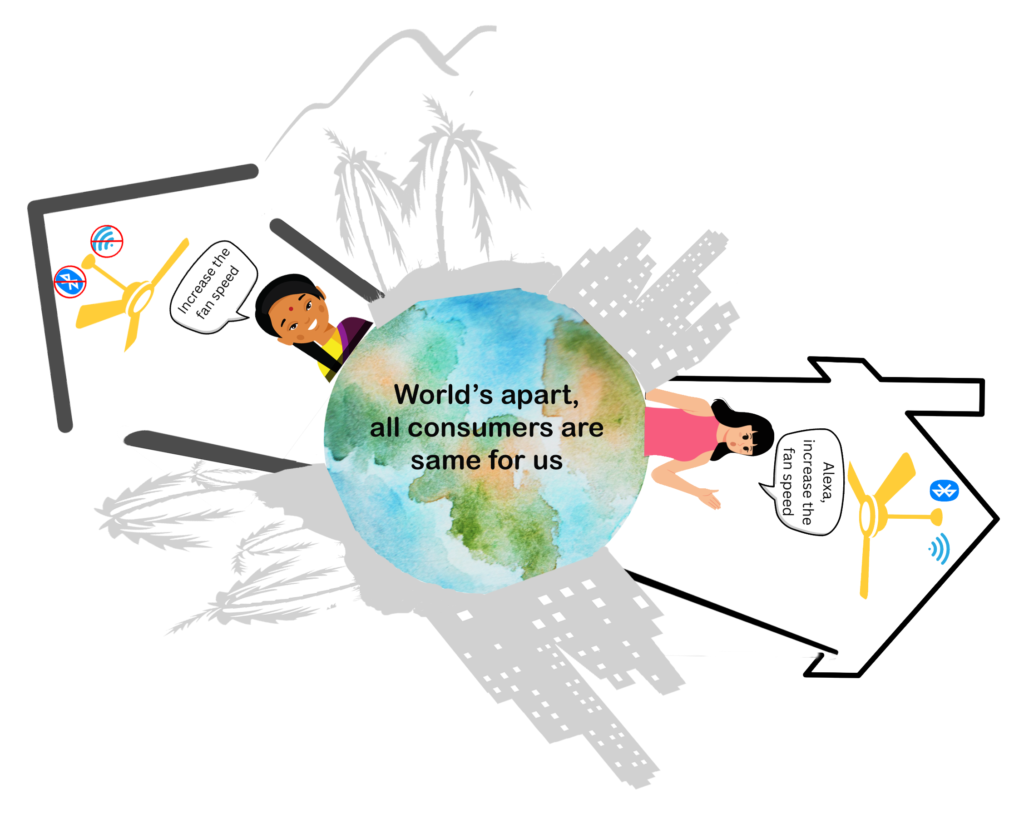Voice is not a difficult technology anymore, but a technology for everyone in this digital era. People expect conversations and actions, so their voice queries are often more precise and action oriented. With advanced NLP, AI and TTS, voice technology can provide a human like experience and makes the consumers feel natural. Nowadays, Voice Assistant helps the consumer not only for interactions, but it has made their life smart in several ways which we have never imagined before.
Voice technology has been gaining steady popularity in recent years, from smart speakers and smart appliances in homes to voice control in cars. It is very much coupled with cloud and connectivity (IoT) since we need a supercomputer to process the NLP, ML and keep refining the AI to get a better user experience. Thanks to those who have dreamt about it, because of them we are utilizing it and it has become an indispensable part of the modern life. As per eMarketer, nearly 42.1 percent of US population are Voice Assistant users in 2022 and all signs point to it growing in popularity with an expected increase in number of users i.e., 146 million users by 2023.
In the light of our experience, we are in the opinion that we should treat Voice and IoT as totally a different technology and they should not be coupled with each other. We have IoT only and Voice IoT devices which support Google actions, AWS IoT and so on, but voice-only devices are still an emerging technology.
By 2022, Amazon’s Alexa marks 5 years in India and interactions with voice assistants had increased exponentially since then. Amazon and Google have launched support for regional languages in India. These voice technology giants are trying to reach every nook and corner of the country through the regional languages support. But the real problem arises due to the infrastructure for the connectivity in the tier 2 cities, towns and villages of the country. There were hardly 658 million internet users in India when the total Indian population was 1.40 billion as of January 2022. To bring the Voice technology even to tier 2 cities, towns and villages of the country, we should separate the Voice from IoT. A local voice module platform with a limited set of controls that can run on the home appliances or any devices can bring the power of this voice technology to these regions without connectivity too.

As proposed, we have Voice IoT solution for the regions with better connectivity and Voice-only solution for the regions without any connectivity. To ease the life of the Consumer electronics or smart home companies, we should integrate both the solutions and make a hybrid solution where it should auto-sense the environment based on the connectivity status and work accordingly, i.e., it will work as a Voice-only solution when there is no connectivity and as Voice IoT solution when there is connectivity. This will also resolve the difficulty of maintaining the same smart device or appliance as a two different SKUs.
Libre Wireless Technology is making this possible today with our super cool MAVID-3M module. Buckle up and hold on tight as we are getting you the demo for the hybrid Voice platform for appliances control. Fantasizing about technology and delivering it to the commercial users is always a challenging journey which Libre Wireless always does in its style.
Authors
Vadivelu Narain
Director,
Libre Wireless Technologies.
Balaji M.P.S.
Business Manager,
Libre Wireless Technologies.
For Sales Contact:
sales@librewireless.com

Interesting article. Thanks!